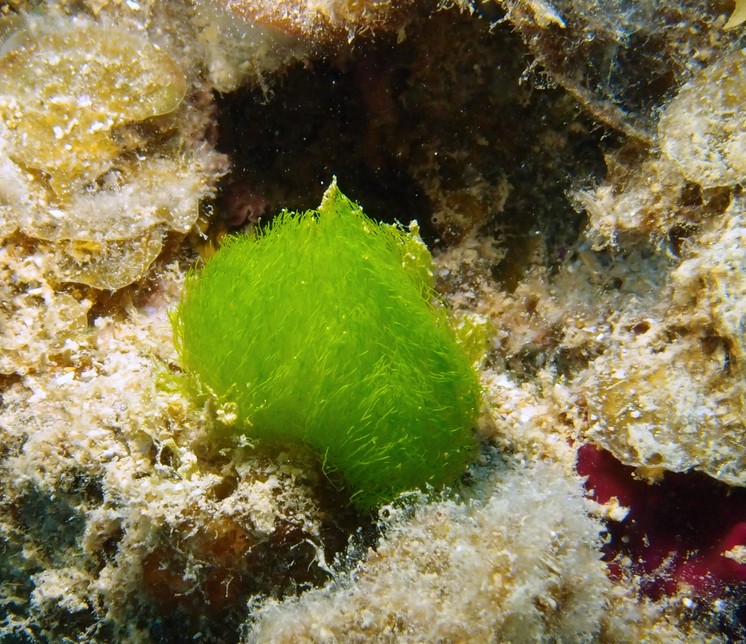CHLORODESMIS FASTIGIATA - ((C.AGARDH) S.C.DUCKER, 1969)
Plantae (Kingdom) > Viridaeplantae (Subkingdom) > Chlorophyta (Phylum) > Bryopsidophyceae (Class) > Bryopsidales (Order) > Udoteaceae (Family) > Chlorodesmis (Genus)
Chlorodesmis fastigiata est une espèce d'algue verte de la famille des Udoteaceae.
La répartition géographique de cette algue chevelue Chlorodesmis fastigiata est limitée à l'océan Indien surtout, même si on la retrouve dans quelques îles de l'ouest de l'océan Pacifique. Sous l'appellation synonyme de Chlorodesmis comosa, elle est également cité en Amérique du Nord sur l'île Guadalupe.
Cette algue verte, Chlorodesmis fastigiata, pousse en touffes jusque 3 à 5 cm de haut, d'un vert vif (quoique cela dépend de la lumière!), constituées de filaments libres et d'un court crampon filamenteux et spongieux. Les filaments cylindriques de 60 à 100 µm de diamètre portent des ramifications dichotomes ou trichotomes pourvues de rétrécissements inégalement répartis au dessus des dichotomies.
Ces algues croissent sur le haut des platiers battus dans des petits interstices et les cuvettes et sur les crêtes récifales.
--------------------------------
In taxonomy, Chlorodesmis is a genus of algae, specifically of the Udoteaceae. Algae in this genus produce the toxic diterpene chlorodesmin to defend themselves against generalist herbivores. This toxin also kills certain corals that touch the alga. Certain fish like the green coral goby that live in the corals eat the alga to enhance their own toxicity. Other coral dwelling fish like Paragobiodon echinocephalus actively trim the alga even though they don't eat it.
The Hair Algae (Chlorodesmis fastigiata) is another filamentous alga which is often found on coral reefs. On a reef they can be made out as beautiful green spots of colour. In english Chlorodesmis fastigiata is called 'turtle weed' because it is sayd that it is eaten by turtles, but despite this name it is known to contain toxic substances which protect it from being eaten. In the wild occurs at a depth range between 3 '' 15 m, it is found on sea grass beds and reefs but is most common in water less than 20 m (42 feet) in depth.
